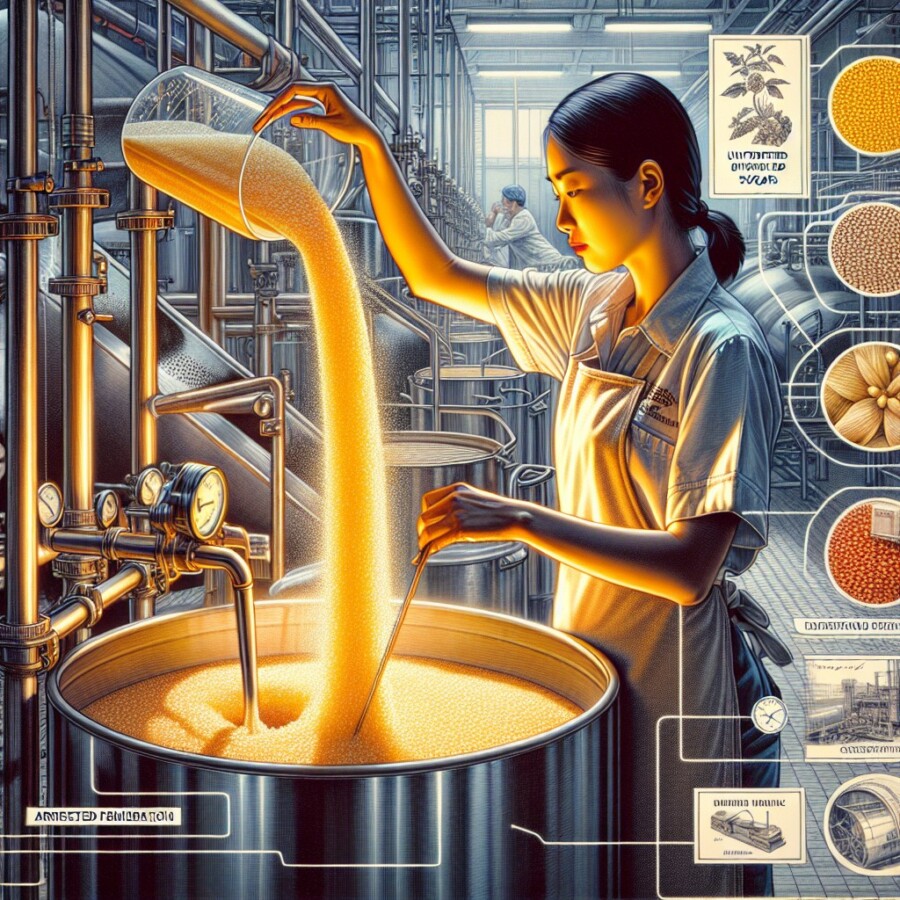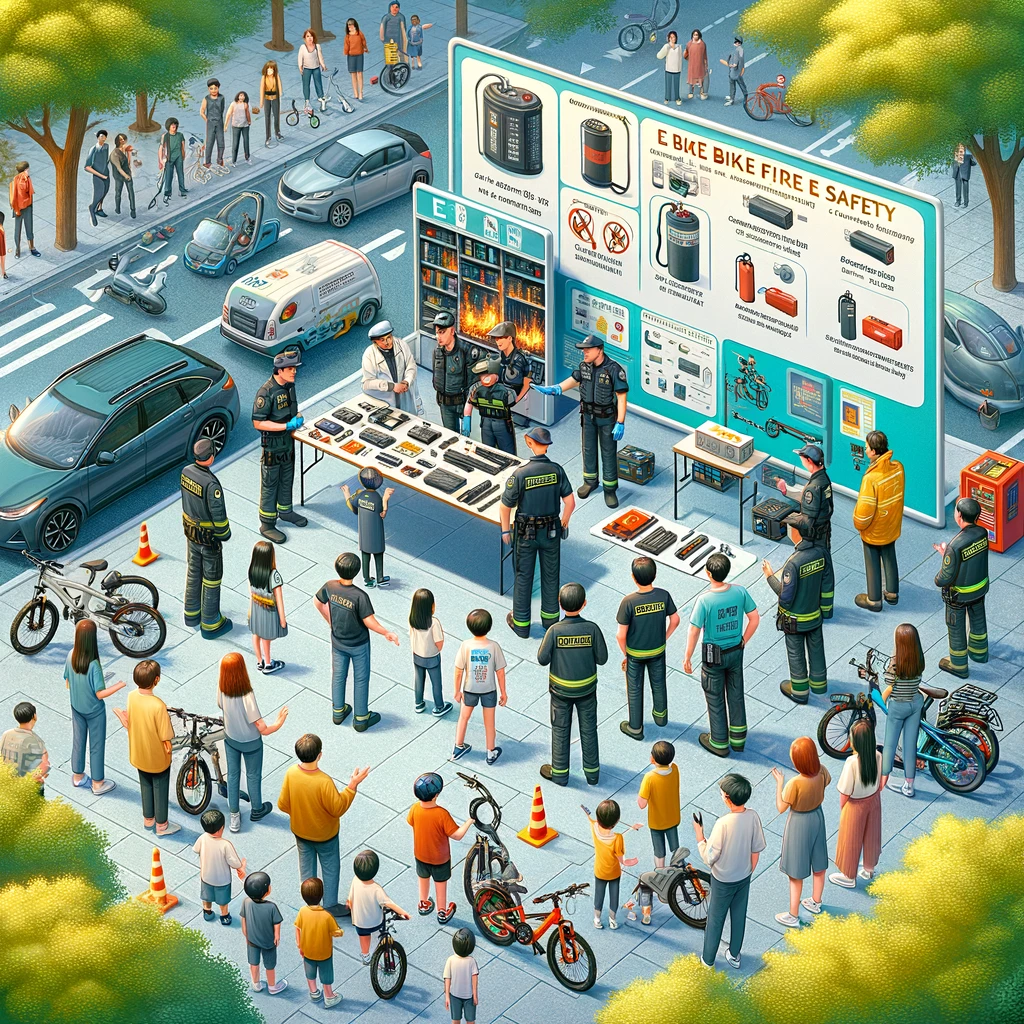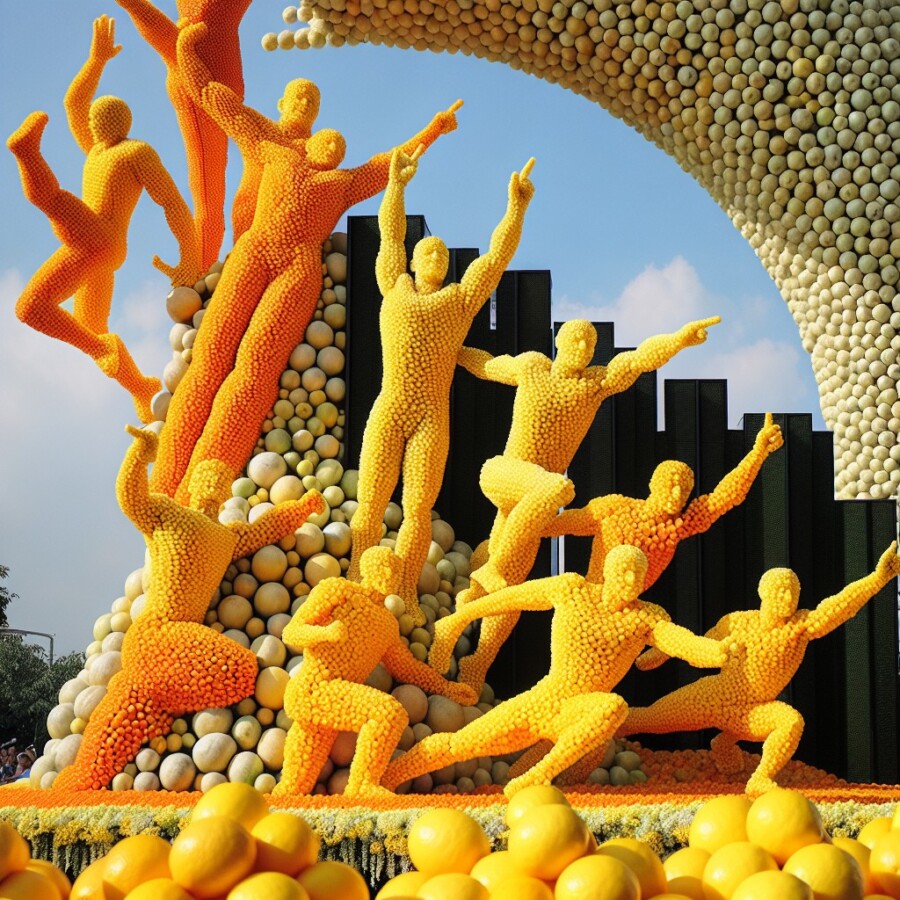More and more people are wanting non-alcoholic beer, so breweries are working hard to make it taste good. One way they do this is by stopping the fermentation process. This means the yeast doesn’t make alcohol. They can do this by using less malted barley, which is what turns into alcohol. They also change the sugars and ingredients and use different temperatures to get the right flavor. Another way some breweries make non-alcoholic beer is by suddenly freezing it. This stops the fermentation and keeps the flavor while getting rid of the alcohol.
Bigger breweries like Heineken use a more expensive process called vacuum distillation. This makes the alcohol evaporate by heating the beer to a lower temperature. But this process makes the beer less flavorful, so Heineken adds back the flavors that were lost. They want their non-alcoholic beer to taste as close as possible to their regular beer.
Some breweries are also using a special kind of yeast that doesn’t make much alcohol. This makes the beer taste better without having a lot of alcohol. Some breweries keep their brewing methods a secret, but others are open about how they make their non-alcoholic beer. For example, the founders of Athletic Brewing Company have a special way of making their beer that they think is different enough to have their own breweries.
As more people want non-alcoholic beer, breweries might start adding things like vitamins and protein to make it healthier. They are using old and new techniques to make non-alcoholic beer that tastes good.
Original news source: The brewing secrets behind tastier no-alcohol beer (BBC)
🎧 Listen:
Slow
Normal
Fast
📖 Vocabulary:
| 1 | breweries | Places where beer is made |
| 2 | fermentation | The process of yeast turning sugars into alcohol and carbon dioxide |
| 3 | malted | Soaked, germinated, and dried grains used for brewing or distilling |
| 4 | ingredients | The parts that are combined to make something, like a recipe |
| 5 | temperatures | How hot or cold something is |
| 6 | evaporate | To turn from liquid into vapor |
| 7 | flavorful | Tasty and full of flavor |
| 8 | yeast | A type of fungus used in making beer, bread, and wine |
| 9 | methods | Ways of doing something |
| 10 | vitamins | Nutrients needed for good health |
| 11 | protein | A substance found in food that is an important part of our diet, helps build and repair body tissue |
| 12 | techniques | Different ways of achieving something, often involving skill or knowledge |
| 13 | non-alcoholic | Drinks that do not contain alcohol |
| 14 | distillation | The process of heating a liquid to create vapor, then cooling that vapor to get a liquid |
| 15 | founders | People who establish an organization or business |
Group or Classroom Activities
Warm-up Activities:
– News Summary
Instructions:
1. Divide the class into pairs or small groups.
2. Give each group a copy of the article.
3. Instruct the groups to read the article and summarize the main points in 3-4 sentences.
4. After a designated time, have each group share their summary with the class.
– Opinion Poll
Instructions:
1. Divide the class into pairs or small groups.
2. Assign each group a specific question related to non-alcoholic beer (e.g. “Do you think non-alcoholic beer will become more popular in the future?”).
3. Instruct the groups to discuss the question and come up with their own opinions.
4. After a designated time, have each group share their opinions with the class and facilitate a class discussion.
– Vocabulary Pictionary
Instructions:
1. Select 10-15 key vocabulary words from the article (e.g. fermentation, distillation, barley).
2. Write each word on a separate piece of paper and put them in a hat or bowl.
3. Divide the class into teams.
4. Have one student from each team come up and choose a word from the hat.
5. Instruct the student to draw a picture that represents the word, while their team tries to guess the word.
6. The team that guesses correctly earns a point. Continue until all words have been guessed.
– Headline Creation
Instructions:
1. Divide the class into pairs or small groups.
2. Instruct each group to create a catchy headline for an article about non-alcoholic beer.
3. Give the groups a few minutes to brainstorm and come up with their headlines.
4. After a designated time, have each group share their headline with the class and discuss why they chose it.
– Pros and Cons
Instructions:
1. Divide the class into pairs or small groups.
2. Instruct each group to list the pros and cons of drinking non-alcoholic beer.
3. Give the groups a few minutes to brainstorm and write down their ideas.
4. After a designated time, have each group share their lists with the class and facilitate a class discussion about the advantages and disadvantages of non-alcoholic beer.
🤔 Comprehension Questions:
1. Why are breweries working hard to make non-alcoholic beer taste good?
2. How do breweries stop the fermentation process to make non-alcoholic beer?
3. What is one way breweries make non-alcoholic beer by changing the ingredients and using different temperatures?
4. How do some breweries make non-alcoholic beer by suddenly freezing it?
5. What more expensive process does Heineken use to make their non-alcoholic beer?
6. Why does Heineken add back the flavors that were lost during the vacuum distillation process?
7. How are some breweries making non-alcoholic beer taste better without having a lot of alcohol?
8. What might breweries start adding to non-alcoholic beer in the future to make it healthier?
Go to answers ⇩
🎧✍️ Listen and Fill in the Gaps:
More and more people are wanting non-alcoholic beer, so breweries are working hard to make it taste good. One way they do this is by stopping the fermentation (1)______. This means the yeast doesn’t make alcohol. They can do this by using less (2)______ barley, which is what turns into alcohol. They also (3)______ the sugars and (4)______ and use different temperatures to get the right flavor. Another way some breweries make non-alcoholic beer is by suddenly freezing it. This stops the fermentation and keeps the flavor while getting rid of the alcohol.
Bigger breweries like Heineken use a more (5)______ process (6)______ vacuum (7)______. This makes the alcohol evaporate by (8)______ the beer to a lower temperature. But this process makes the beer less flavorful, so Heineken adds back the flavors that were lost. They want their non-alcoholic beer to taste as close as possible to their (9)______ beer.
Some breweries are also (10)______ a special kind of yeast that doesn’t make much alcohol. This makes the beer taste better without having a lot of alcohol. Some breweries keep their (11)______ methods a secret, but (12)______ are open about how they make their non-alcoholic beer. For example, the founders of (13)______ Brewing (14)______ have a special way of making their beer that they think is different enough to have their own breweries.
As more (15)______ want non-alcoholic beer, breweries might start (16)______ things like vitamins and protein to make it healthier. They are using old and new techniques to make non-alcoholic beer that tastes good.
Go to answers ⇩
💬 Discussion Questions:
Students can ask a partner these questions, or discuss them as a group.
1. What is non-alcoholic beer and why do you think more people are wanting it?
2. Have you ever tried non-alcoholic beer? If so, what did you think of the taste?
3. How would you feel if you found out that the non-alcoholic beer you were drinking had added vitamins and protein?
4. Do you think it’s important for non-alcoholic beer to taste as close as possible to regular beer? Why or why not?
5. What do you think about breweries using different techniques to make non-alcoholic beer taste better?
6. Have you ever heard of vacuum distillation? If so, can you explain what it is in your own words?
7. Do you think breweries should keep their brewing methods a secret or be open about how they make their non-alcoholic beer? Why or why not?
8. What are some reasons why someone might choose to drink non-alcoholic beer instead of regular beer?
9. How do you think the addition of vitamins and protein to non-alcoholic beer might change its popularity?
10. Do you think it’s important for non-alcoholic beer to be healthy? Why or why not?
11. Have you ever tried a non-alcoholic beverage that was meant to taste like an alcoholic one? If so, what did you think of the taste?
12. How do you think the taste of non-alcoholic beer compares to regular beer?
13. What are some advantages and disadvantages of using different techniques to make non-alcoholic beer taste better?
14. Do you think non-alcoholic beer will continue to grow in popularity? Why or why not?
15. How do you think the availability of non-alcoholic beer has changed over the years?
Individual Activities
📖💭 Vocabulary Meanings:
Match each word to its meaning.
Words:
1. breweries
2. fermentation
3. malted
4. ingredients
5. temperatures
6. evaporate
7. flavorful
8. yeast
9. methods
10. vitamins
11. protein
12. techniques
13. non-alcoholic
14. distillation
15. founders
Meanings:
(A) People who establish an organization or business
(B) How hot or cold something is
(C) A type of fungus used in making beer, bread, and wine
(D) Nutrients needed for good health
(E) The process of heating a liquid to create vapor, then cooling that vapor to get a liquid
(F) Ways of doing something
(G) Different ways of achieving something, often involving skill or knowledge
(H) A substance found in food that is an important part of our diet, helps build and repair body tissue
(I) To turn from liquid into vapor
(J) The parts that are combined to make something, like a recipe
(K) Soaked, germinated, and dried grains used for brewing or distilling
(L) Places where beer is made
(M) Tasty and full of flavor
(N) Drinks that do not contain alcohol
(O) The process of yeast turning sugars into alcohol and carbon dioxide
Go to answers ⇩
🔡 Multiple Choice Questions:
1. How do breweries make non-alcoholic beer taste good?
(a) By using more malted barley
(b) By adding more sugar and ingredients
(c) By stopping the fermentation process
(d) By using higher temperatures
2. What is one method breweries use to stop the fermentation process?
(a) Suddenly freezing the beer
(b) Adding more malted barley
(c) Using different temperatures
(d) Using a special kind of yeast
3. What is the more expensive process that bigger breweries like Heineken use?
(a) Freezing the beer
(b) Vacuum distillation
(c) Adding vitamins and protein
(d) Using a special kind of yeast
4. Why does Heineken add back flavors to their non-alcoholic beer?
(a) The vacuum distillation process makes the beer less flavorful
(b) The flavors are lost during the fermentation process
(c) The non-alcoholic beer tastes better with added flavors
(d) The flavors are naturally removed during the brewing process
5. What is one method some breweries keep as a secret?
(a) Using different temperatures in the brewing process
(b) Their special way of making non-alcoholic beer
(c) Adding vitamins and protein to the beer
(d) Using a special kind of yeast that doesn’t make much alcohol
6. What might breweries start adding to non-alcoholic beer to make it healthier?
(a) More malted barley
(b) Different sugars and ingredients
(c) Vitamins and protein
(d) Higher temperatures during the brewing process
7. What is one benefit of using a special kind of yeast that doesn’t make much alcohol?
(a) The fermentation process is faster
(b) The beer has a longer shelf life
(c) The flavors are more intense
(d) The beer tastes better without a lot of alcohol
8. Why are breweries working hard to make non-alcoholic beer taste good?
(a) Because non-alcoholic beer is cheaper to produce
(b) Because alcoholic beer is becoming less popular
(c) Because breweries want to keep their brewing methods a secret
(d) Because more people want non-alcoholic beer
Go to answers ⇩
🕵️ True or False Questions:
1. Some breweries use a special kind of yeast that produces less alcohol, resulting in a better-tasting non-alcoholic beer.
2. Breweries are not exploring the addition of vitamins and protein to non-alcoholic beer to make it healthier as the demand for such beverages decreases.
3. One way to stop fermentation is by using more malted barley, which is what turns into alcohol.
4. Some breweries freeze non-alcoholic beer gradually to stop fermentation and remove the alcohol while preserving the flavor.
5. Heineken adds back the flavors that were lost during vacuum distillation to make their non-alcoholic beer taste as close as possible to their regular beer.
6. Breweries also change the sugars and ingredients and use different temperatures to achieve the right flavor in non-alcoholic beer.
7. Bigger breweries like Heineken use a more expensive process called vacuum distillation to remove alcohol, but this can make the beer less flavorful.
8. Breweries are not working hard to make non-alcoholic beer taste good by stopping the fermentation process.
Go to answers ⇩
📝 Write a Summary:
Write a summary of this news article in two sentences.
Writing Questions:
Answer the following questions. Write as much as you can for each answer.
1. How do breweries make non-alcoholic beer taste good?
2. What is one way breweries can stop the fermentation process?
3. Why does Heineken use vacuum distillation for their non-alcoholic beer?
4. What is one method some breweries use to make their non-alcoholic beer taste better?
5. What might breweries add to non-alcoholic beer in the future to make it healthier?
✅ Answers
🤔✅ Comprehension Question Answers:
1. Why are breweries working hard to make non-alcoholic beer taste good?
Breweries are working hard to make non-alcoholic beer taste good because more and more people are wanting it. They want to provide a tasty alternative to regular beer for those who don’t want to consume alcohol.
2. How do breweries stop the fermentation process to make non-alcoholic beer?
Breweries can stop the fermentation process to make non-alcoholic beer by using different techniques. One way is by using less malted barley, which is what turns into alcohol. They can also change the sugars and ingredients and use different temperatures to get the right flavor. Another method is suddenly freezing the beer, which stops the fermentation and removes the alcohol.
3. What is one way breweries make non-alcoholic beer by changing the ingredients and using different temperatures?
One way breweries make non-alcoholic beer is by changing the ingredients and using different temperatures. By using less malted barley, which turns into alcohol, and adjusting the sugars and other ingredients, they can create a beer with a lower alcohol content. They also use different temperatures during the brewing process to achieve the desired flavor.
4. How do some breweries make non-alcoholic beer by suddenly freezing it?
Some breweries make non-alcoholic beer by suddenly freezing it. This process stops the fermentation and removes the alcohol while preserving the flavor of the beer. By freezing the beer at the right moment, they can achieve a non-alcoholic version that still tastes good.
5. What more expensive process does Heineken use to make their non-alcoholic beer?
Heineken uses a more expensive process called vacuum distillation to make their non-alcoholic beer. This involves heating the beer to a lower temperature, causing the alcohol to evaporate. However, this process can make the beer less flavorful.
6. Why does Heineken add back the flavors that were lost during the vacuum distillation process?
Heineken adds back the flavors that were lost during the vacuum distillation process because they want their non-alcoholic beer to taste as close as possible to their regular beer. Since the vacuum distillation process can make the beer less flavorful, they add back the flavors to enhance the taste.
7. How are some breweries making non-alcoholic beer taste better without having a lot of alcohol?
Some breweries are making non-alcoholic beer taste better without having a lot of alcohol by using a special kind of yeast that doesn’t produce much alcohol during fermentation. This allows them to create a beer with a lower alcohol content while still maintaining a good flavor.
8. What might breweries start adding to non-alcoholic beer in the future to make it healthier?
In the future, breweries might start adding things like vitamins and protein to non-alcoholic beer to make it healthier. As more people are looking for healthier beverage options, breweries may incorporate these additional ingredients to enhance the nutritional value of non-alcoholic beer.
Go back to questions ⇧
🎧✍️✅ Listen and Fill in the Gaps Answers:
(1) process
(2) malted
(3) change
(4) ingredients
(5) expensive
(6) called
(7) distillation
(8) heating
(9) regular
(10) using
(11) brewing
(12) others
(13) Athletic
(14) Company
(15) people
(16) adding
Go back to questions ⇧
📖💭✅ Vocabulary Meanings Answers:
1. breweries
Answer: (L) Places where beer is made
2. fermentation
Answer: (O) The process of yeast turning sugars into alcohol and carbon dioxide
3. malted
Answer: (K) Soaked, germinated, and dried grains used for brewing or distilling
4. ingredients
Answer: (J) The parts that are combined to make something, like a recipe
5. temperatures
Answer: (B) How hot or cold something is
6. evaporate
Answer: (I) To turn from liquid into vapor
7. flavorful
Answer: (M) Tasty and full of flavor
8. yeast
Answer: (C) A type of fungus used in making beer, bread, and wine
9. methods
Answer: (F) Ways of doing something
10. vitamins
Answer: (D) Nutrients needed for good health
11. protein
Answer: (H) A substance found in food that is an important part of our diet, helps build and repair body tissue
12. techniques
Answer: (G) Different ways of achieving something, often involving skill or knowledge
13. non-alcoholic
Answer: (N) Drinks that do not contain alcohol
14. distillation
Answer: (E) The process of heating a liquid to create vapor, then cooling that vapor to get a liquid
15. founders
Answer: (A) People who establish an organization or business
Go back to questions ⇧
🔡✅ Multiple Choice Answers:
1. How do breweries make non-alcoholic beer taste good?
Answer: (c) By stopping the fermentation process
2. What is one method breweries use to stop the fermentation process?
Answer: (a) Suddenly freezing the beer
3. What is the more expensive process that bigger breweries like Heineken use?
Answer: (b) Vacuum distillation
4. Why does Heineken add back flavors to their non-alcoholic beer?
Answer: (a) The vacuum distillation process makes the beer less flavorful
5. What is one method some breweries keep as a secret?
Answer: (b) Their special way of making non-alcoholic beer
6. What might breweries start adding to non-alcoholic beer to make it healthier?
Answer: (c) Vitamins and protein
7. What is one benefit of using a special kind of yeast that doesn’t make much alcohol?
Answer: (d) The beer tastes better without a lot of alcohol
8. Why are breweries working hard to make non-alcoholic beer taste good?
Answer: (d) Because more people want non-alcoholic beer
Go back to questions ⇧
🕵️✅ True or False Answers:
1. Some breweries use a special kind of yeast that produces less alcohol, resulting in a better-tasting non-alcoholic beer. (Answer: True)
2. Breweries are not exploring the addition of vitamins and protein to non-alcoholic beer to make it healthier as the demand for such beverages decreases. (Answer: False)
3. One way to stop fermentation is by using more malted barley, which is what turns into alcohol. (Answer: False)
4. Some breweries freeze non-alcoholic beer gradually to stop fermentation and remove the alcohol while preserving the flavor. (Answer: False)
5. Heineken adds back the flavors that were lost during vacuum distillation to make their non-alcoholic beer taste as close as possible to their regular beer. (Answer: True)
6. Breweries also change the sugars and ingredients and use different temperatures to achieve the right flavor in non-alcoholic beer. (Answer: True)
7. Bigger breweries like Heineken use a more expensive process called vacuum distillation to remove alcohol, but this can make the beer less flavorful. (Answer: True)
8. Breweries are not working hard to make non-alcoholic beer taste good by stopping the fermentation process. (Answer: False)
Go back to questions ⇧












